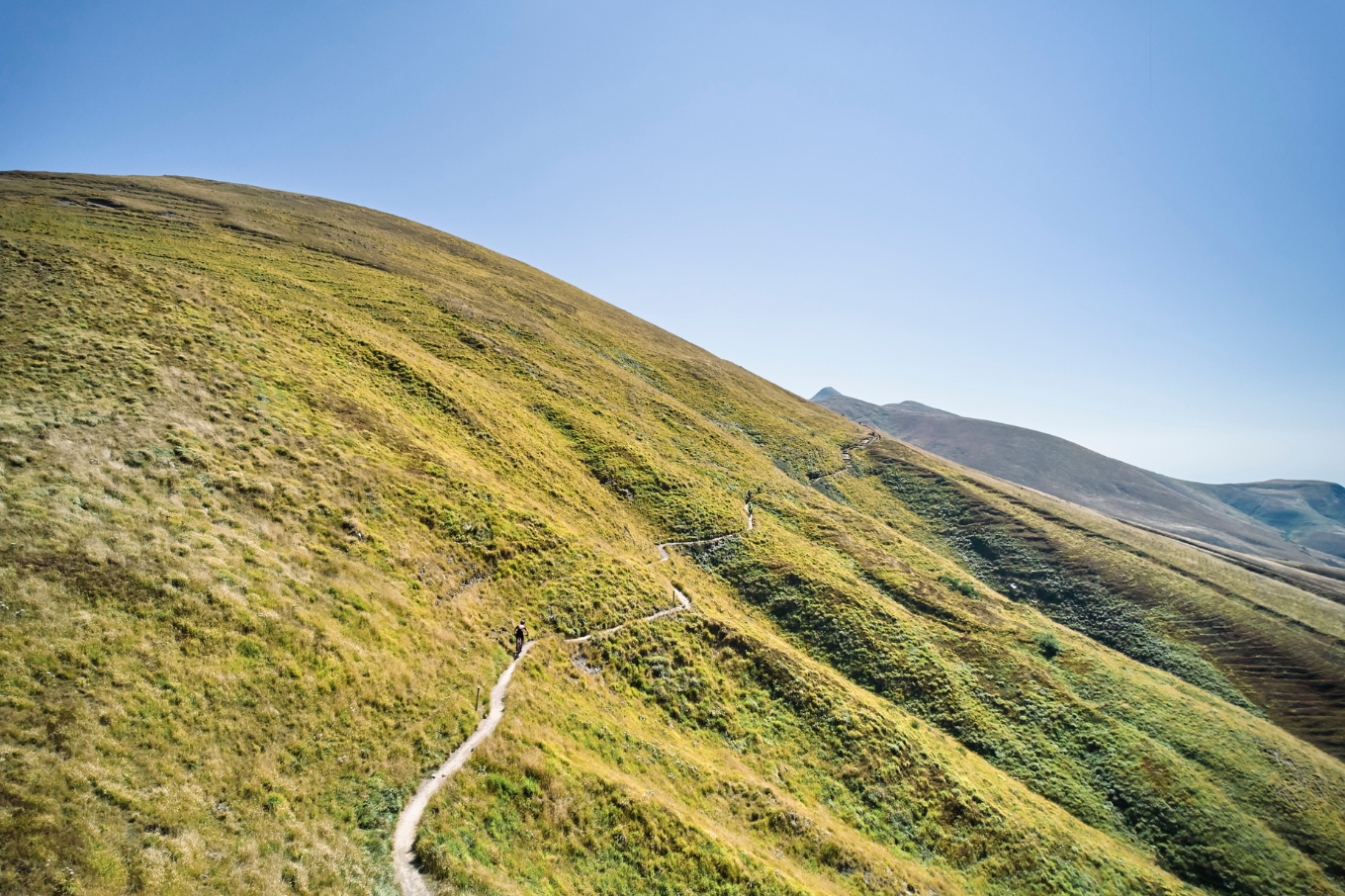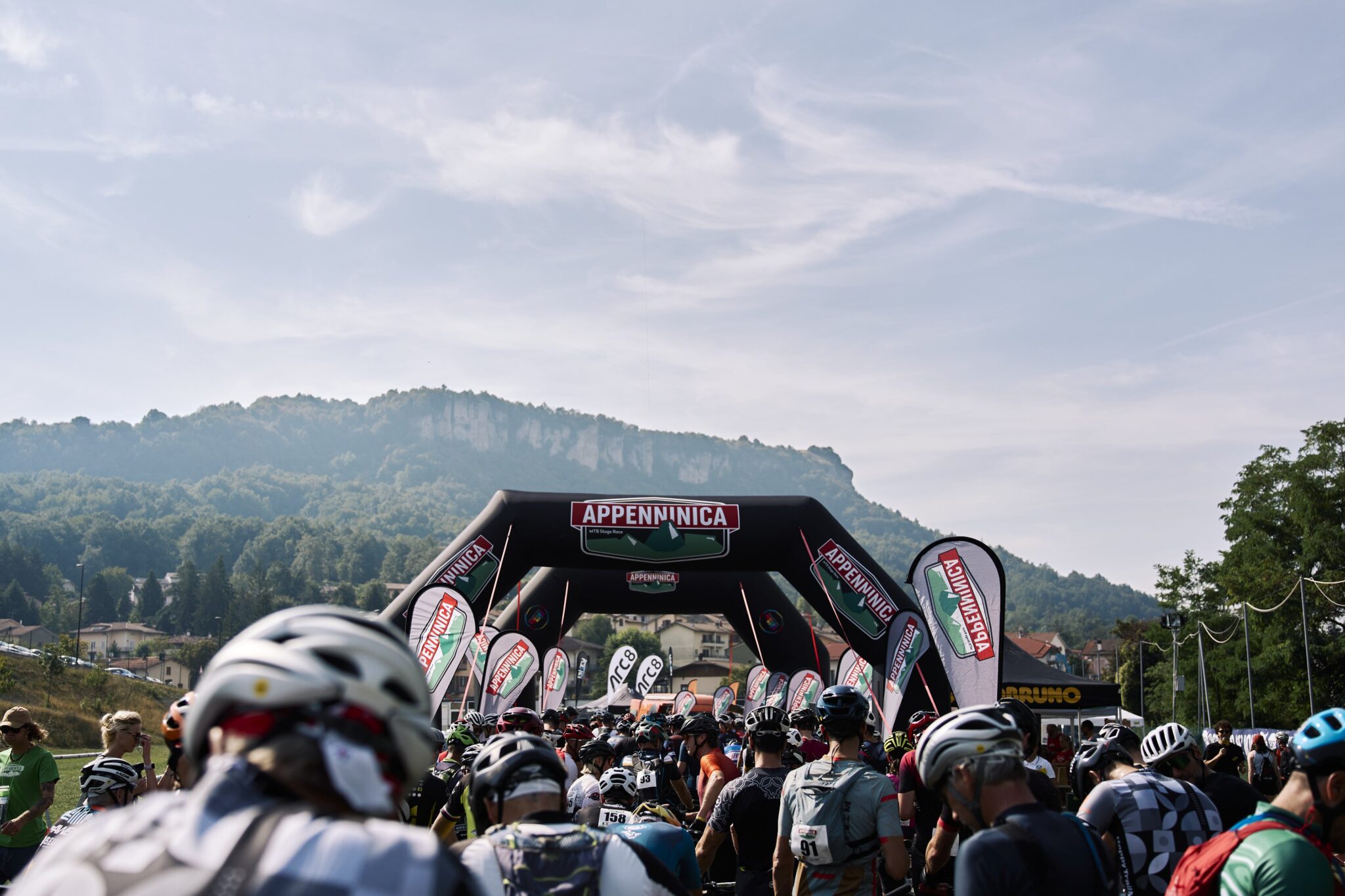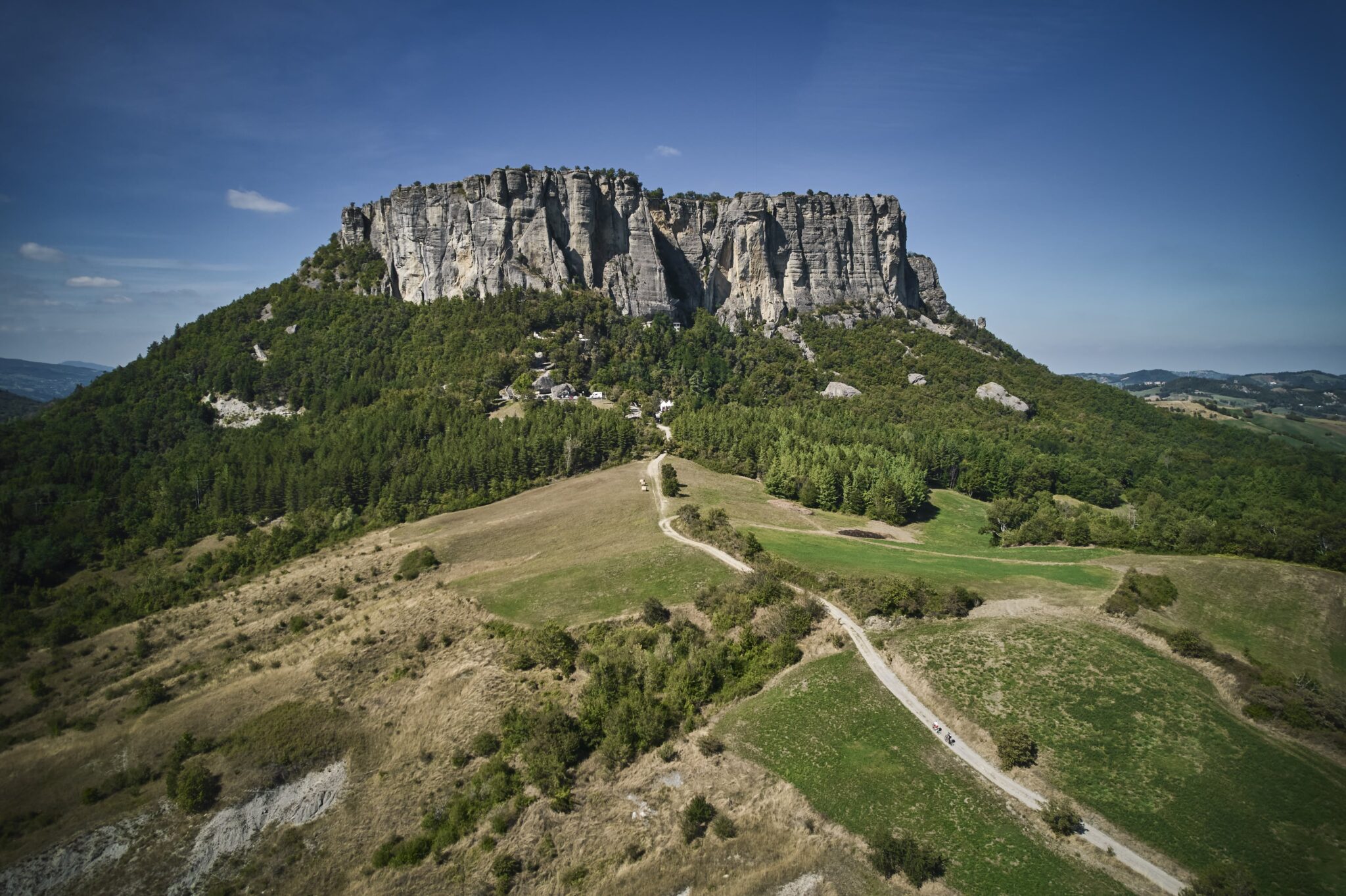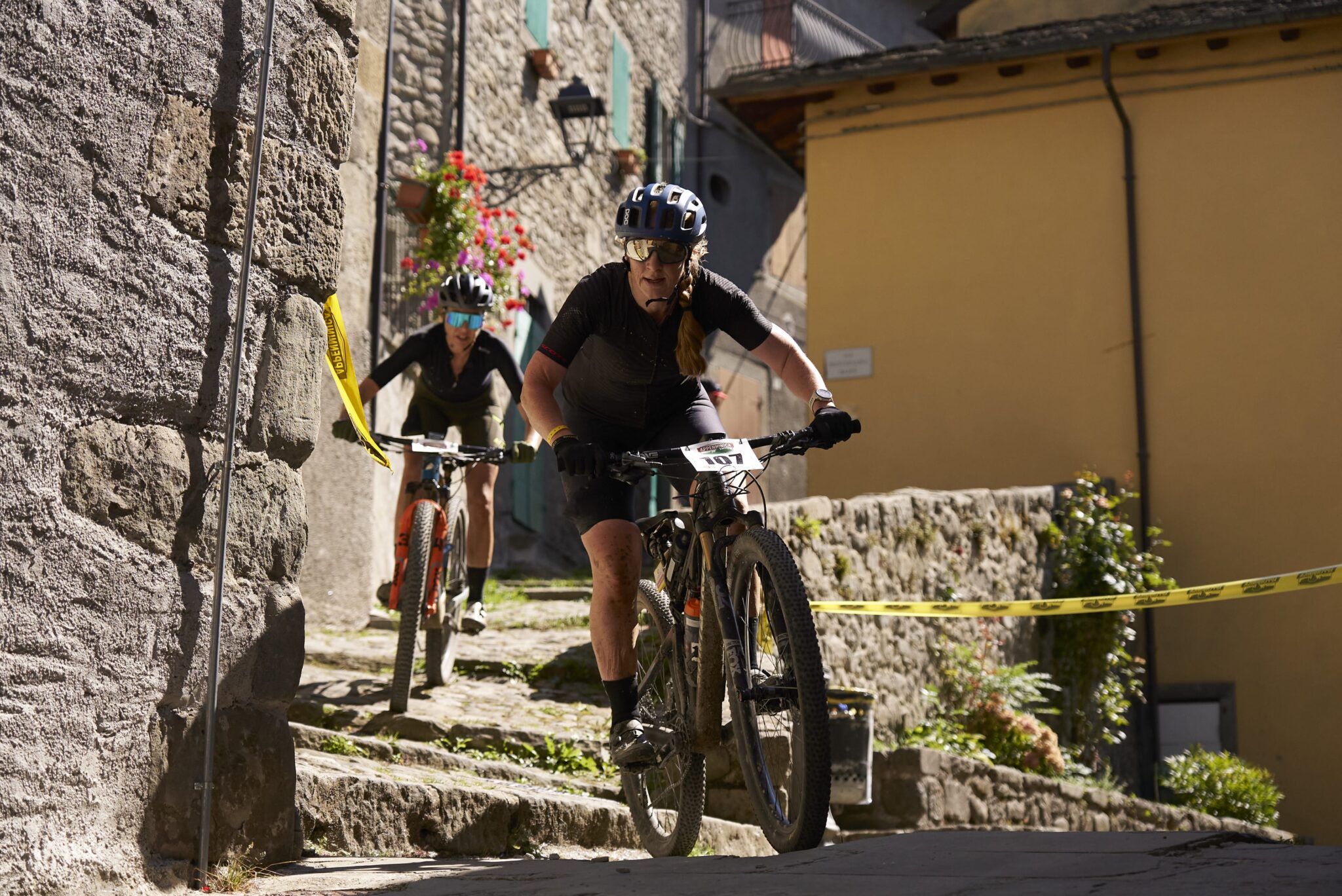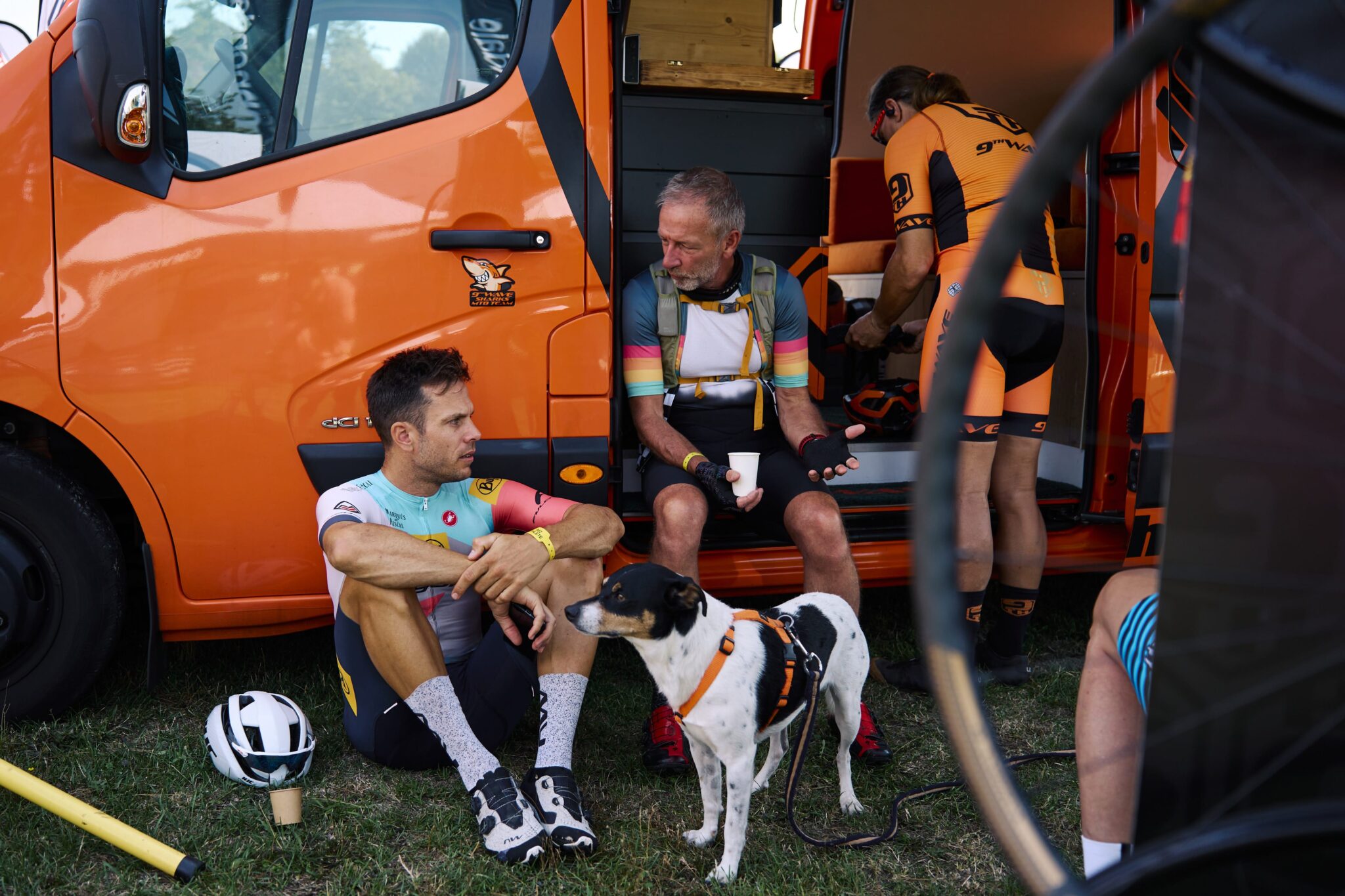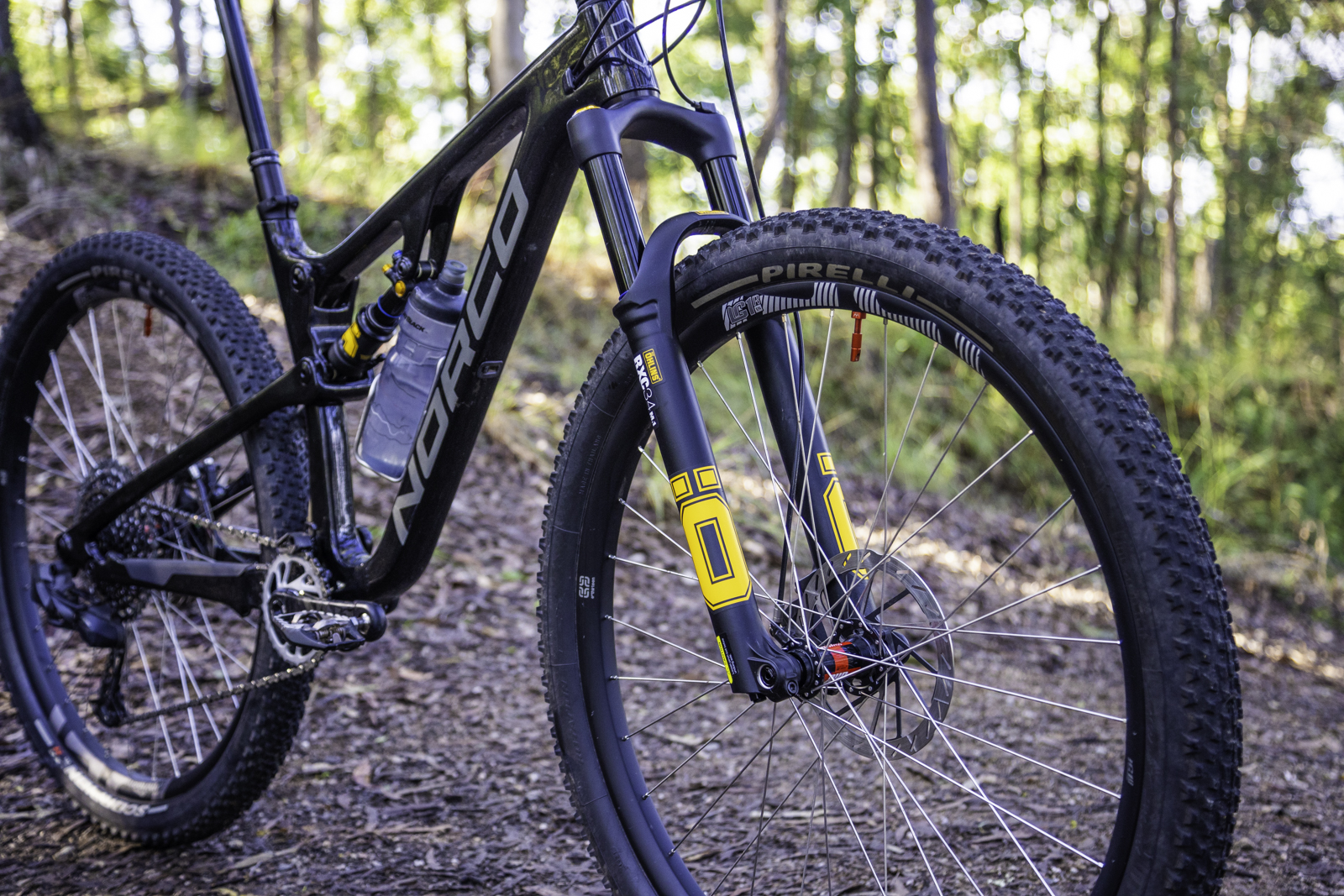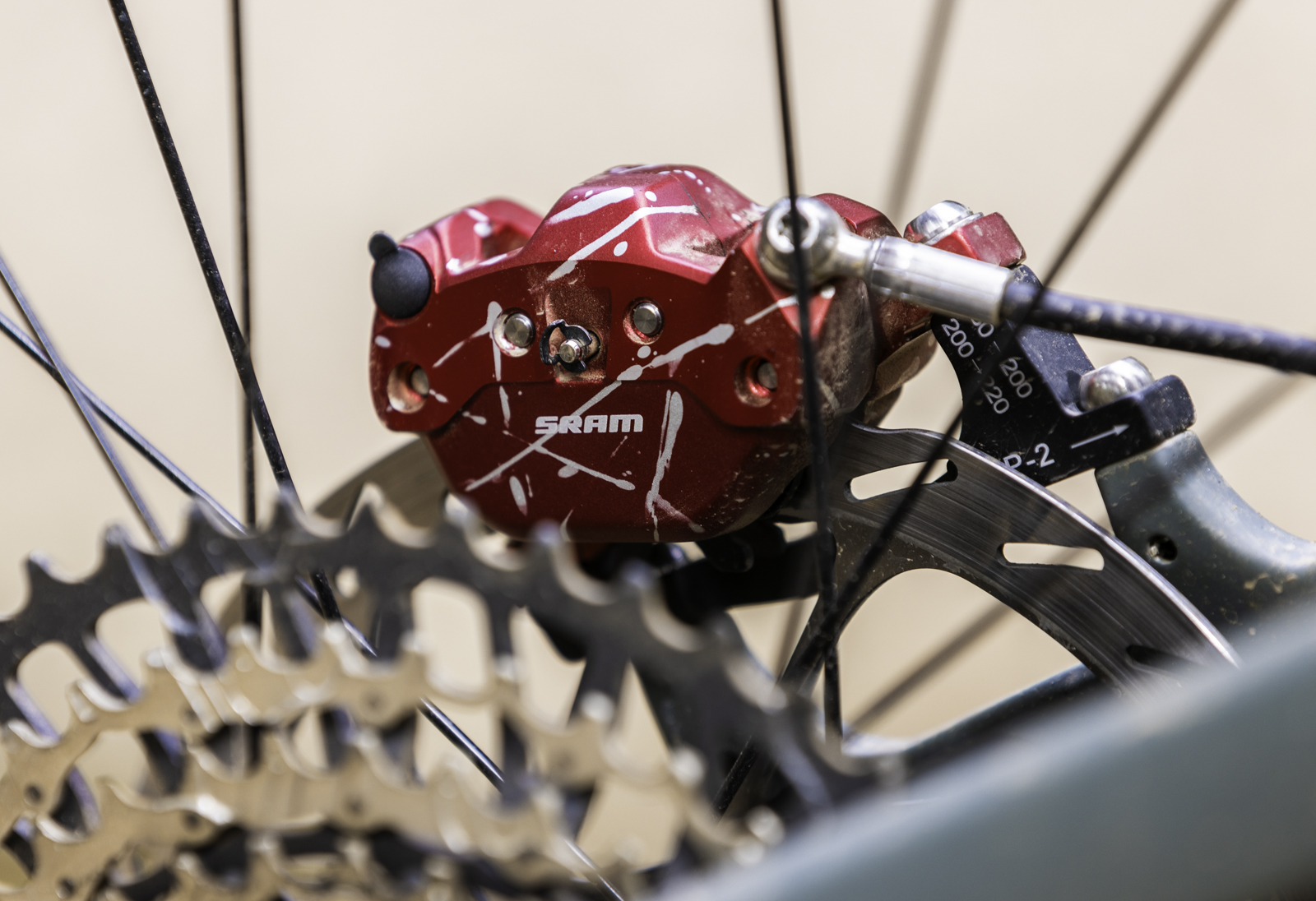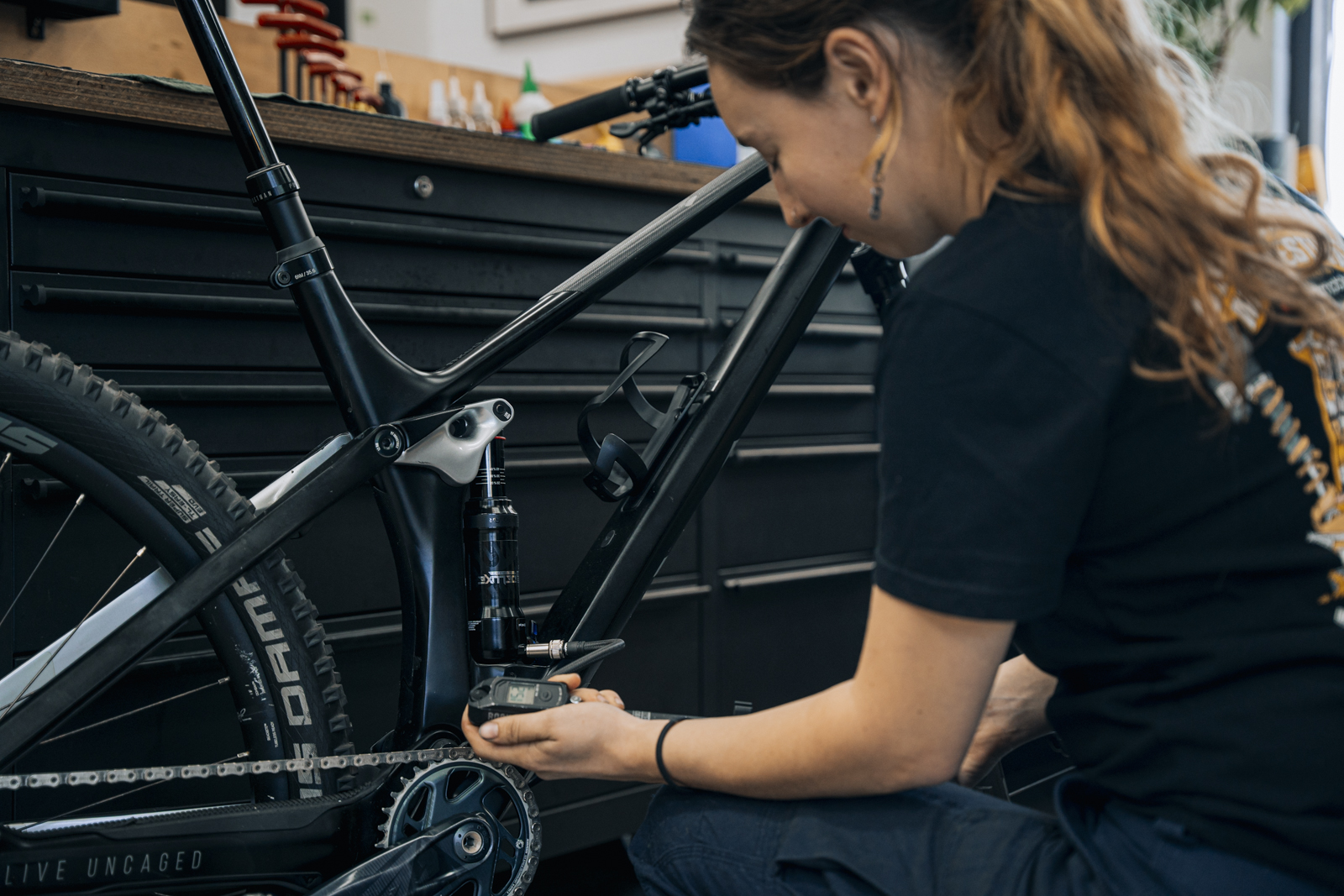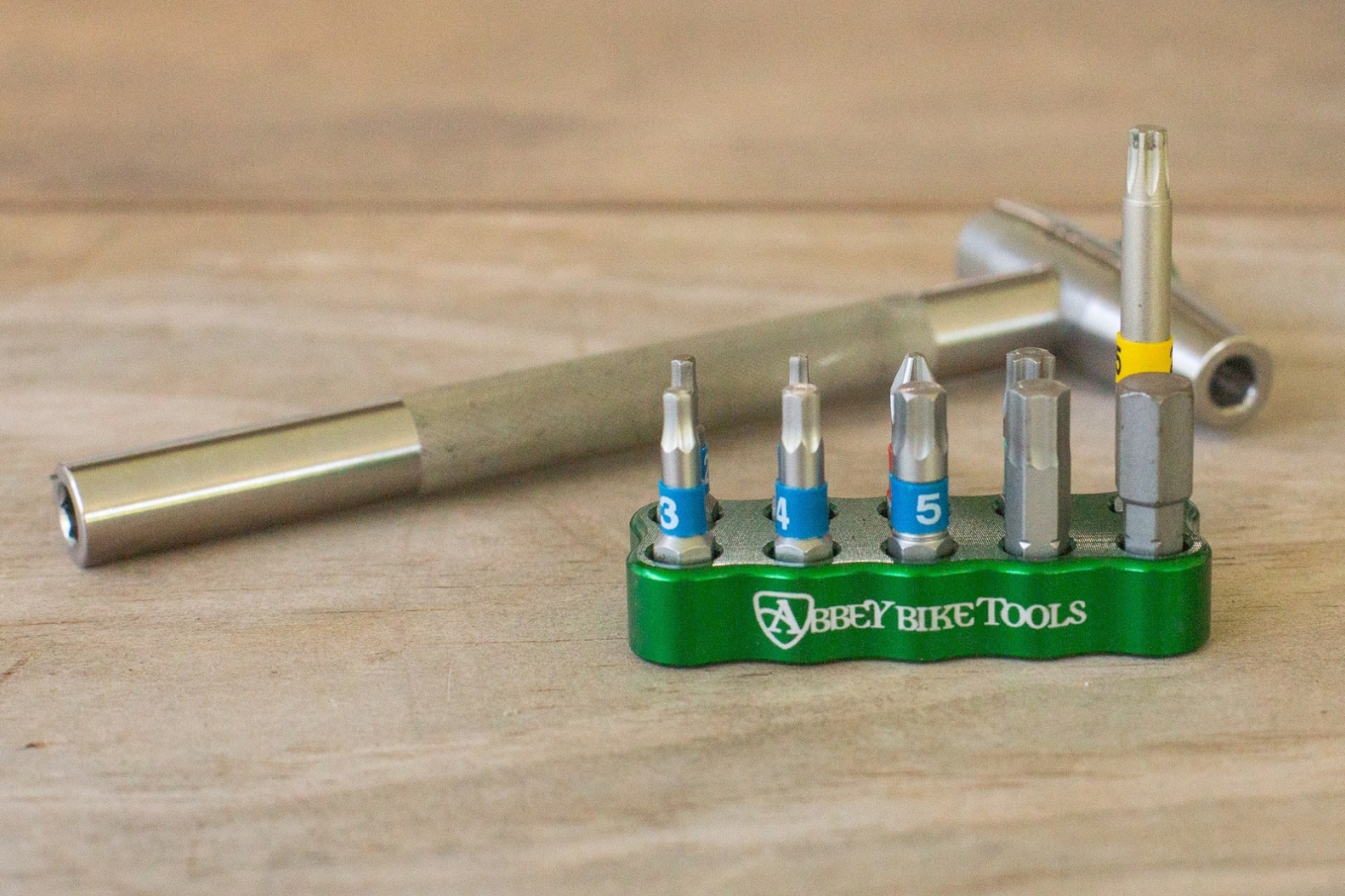Racing the Appenninica Mountain Bike Stage Race in Italy
(This review originally featured in Australian Mountain Bike #208)
Word and Photos: Mike Blewitt
With my dropper slammed, I’m pushing through my hands and f eet, hoping beyond hope that my half-worn racing tyres find a few more edges than I can see in the shadowy dust as I’m skipping down a fall line chute. We’re plunging into a valley from the town of Castelnovo ne’ Monti, jumpingnbetween trails hidden in hed gerows and beside steep creek lines, swapping in and out of the early spring sunshine in the Apennine mountains of Italy. On the first stage of six, it is clear that everyone is looking to make their mark and find some clear air. It’s not working for every one, as I weave around a rider who has come unstuck, and try to gas across the small gap that created as we pop out onto a farm trail. The line of riders is snaking upwards into the forest and I can see the leaders out of the saddle and attacking each othe r. I may have misjudged this race.
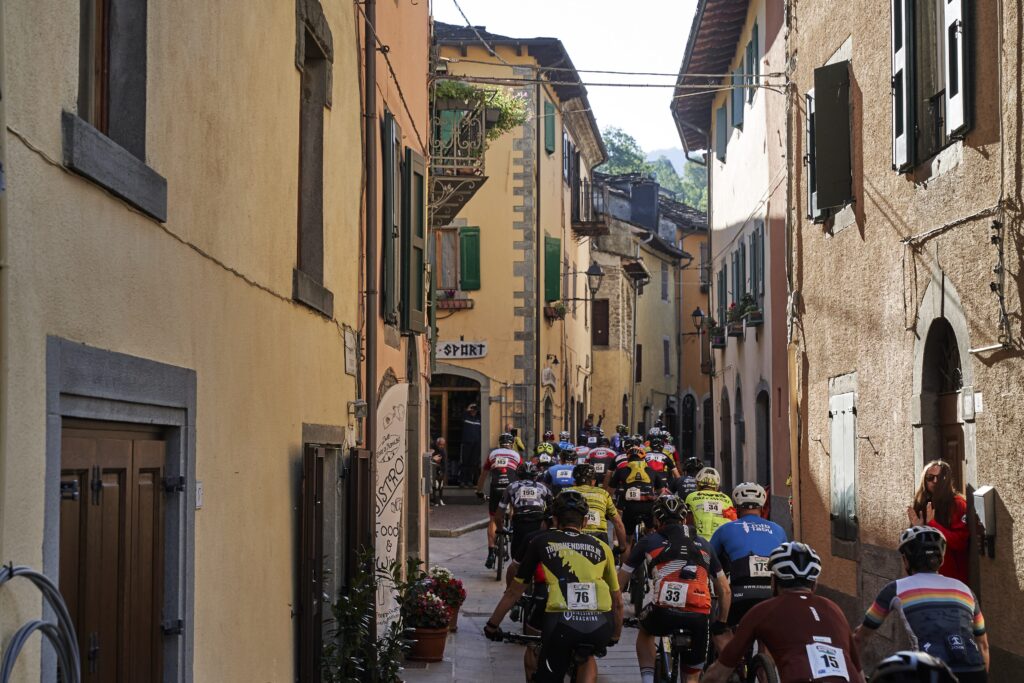
Arriving in Italy for the Appenninica MTB Stage Race
Mountain bike stage races are my jam. I’ve done a lot of them over the past two decades, but certainly do far less now. In 2011 I think I even spent more than 10% of the year in a stage race. I’ve always found that a mountain bike stage race is an excellent way to get a lot of time on your bike, see a lot of places, ride lots of new trails and meet some new people as well. I have met many of my close friends through stage races, and that network joins a few corners of the globe. Because of all this, when I first heard of the Appenninica MTB a little over five years ago, I was intrigued.
The event crew are a wide ranging team who work in tourism and hospitality. That might sound like a small detail, but it is anything but. This shapes what they want from the event. They want riders to experience the hidden areas of the Emilia Romagna region, riding trails from valley floor, to peak and back again. They connect a range of villages who welcome riders with incredible hospitality and food, with hotels or the camp providing accommodation for weary riders.
The Appenninica MTB is a full-service mountain bike event, with optional transfers to and from the start from the closest airport, hotel options, massage services, meals, in-race nutrition, incredible mechanics and much more. That’s a lot of work, and so the event is capped at 150 riders. This is a good fit for the towns the event visits, the trails the race uses, and how riders interact with the event.
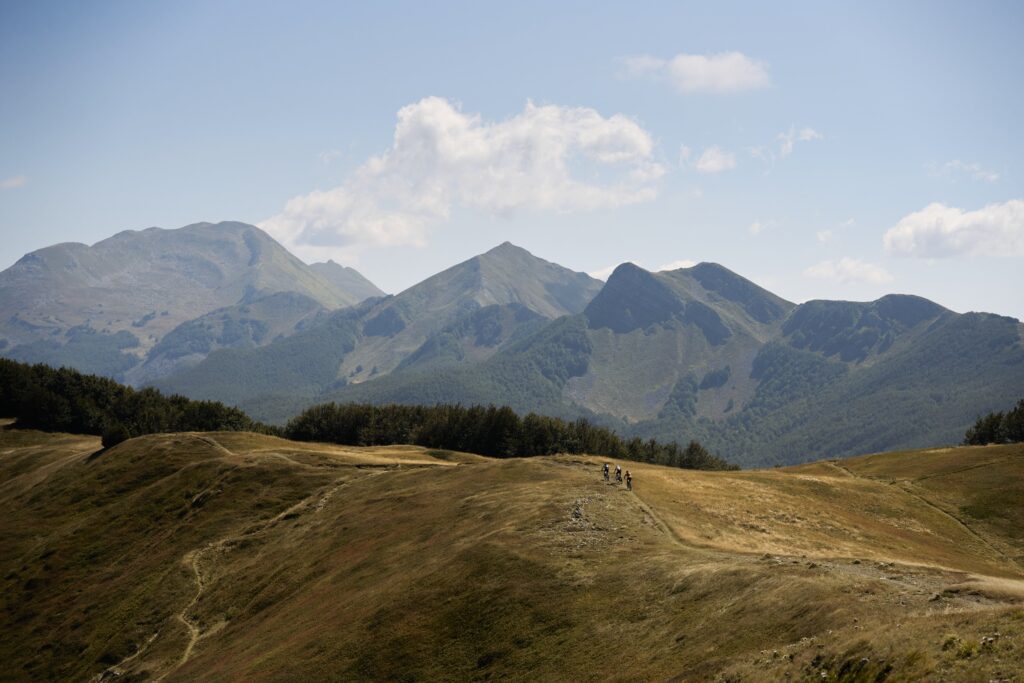
Friends of mine from the world of stage race took part in previous editions of the Appenninica MTB, and they all spoke very highly of the event, especially about the rider care and community feel that the organisers created. With some work travel in August 2023, I made plans to get to Italy for a week in September.
Arriving in Bologna after bikepacking across part of the Swiss Alps, I was ready to enjoy myself at this six day stage race, eating good food, meeting friends old and new, and riding some ancient Euro trails. I flicked through the digital race book, and reaslied that I may have forgotten that this is a marathon stage race. With about 14000m of climbing across the next 6 days – this wasn’t going to be a walk in the park! I caught the tram to the airport to catch the shuttle to the event – and jump into the stage race world for a week.
Mountain biking amongst friends
As a mountain biker, you’re probably aware of how easy it is to get along with other mountain bikers. With a lot of the event participants converging on Bologna airport for the transfer, the small airport was awash with high fives and handshakes. While I knew a few people already, by the time we boarded coaches to drive to Castelnovo ne’ Monti I knew many more – there were also familiar faces from other events I’ve been to.
Once at the event we had our race armbands fitted, a true sign that you now enter the stage race world. We received our bags to squeeze our gear into, packed up what we wouldn’t need for a week, and found our lodgings, before sitting down for dinner in the quaint Italian town of Castel ne’ Monti. Tomorrow – we would start racing.
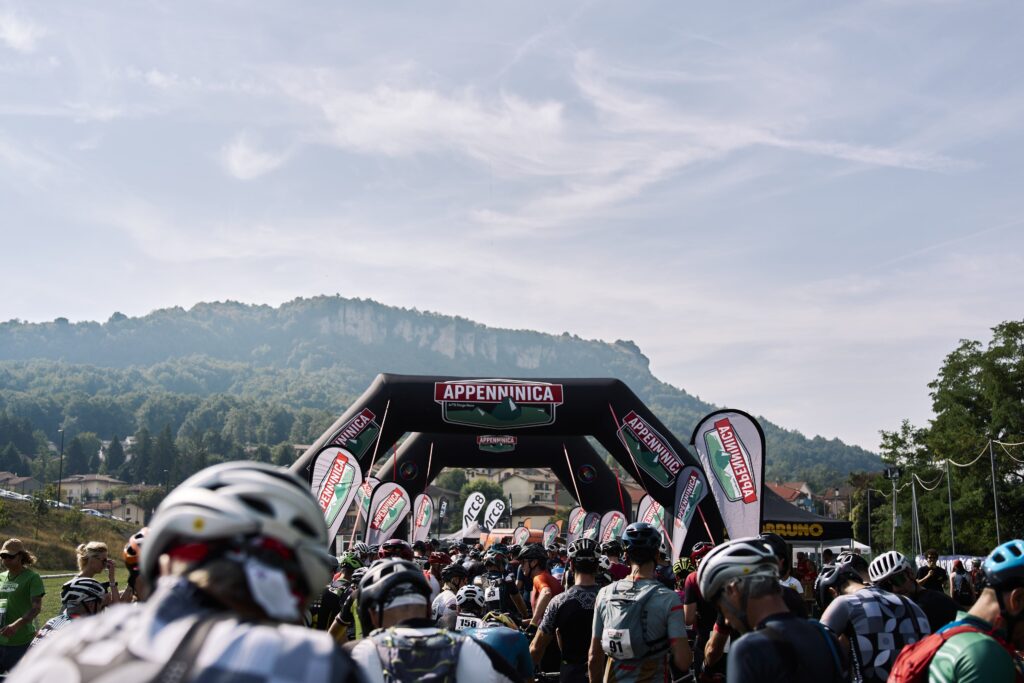
Engage in the moment
Back to being behind bars – the first stage was intense. After getting past a couple of fallen riders, I caught sight of friend and competitor Gordon Wadsworth, and we tackled a lot of the rest of the stage together.
Bike races in Europe are unlike any bike race you can do in Australia. From the terrain, to the racing, the support (official or otherwise) and how the event engages with the people and surroundings. And it is the latter point that brings a lot of appeal to me. Each day the route started in the very centre of a village. 150 of us would be milling around, checking tyre pressures, filling bottles and generally fussing about some detail with our equipment.
Locals would look on from the windows above us, or as they walked by on their daily stroll through their village. Riders would get a coffee at the local bar, soak in some sunshine to fight the last of the cool overnight air. Radio Bruno kept the mood high no matter how tired people were, with the kind of dance classics that are oh so kitsch, but perfect for the current setting. As with any big race, when the lead out motorbikes fire up and rev their engines it brings you back to the here and now. This point sees me find focus for the coming hours.
Each day we would wind out of the villages, and like any race it is time to find where your limit is, and dial it back a tiny fraction from there. We would ascend steep single-laned roads, onto farm tracks, paths through fields and into the forest. Riders would disappear in front, and appear from behind, with any local property owners looking on and cheering. Whether that was from their front door, a seat of a tractor or from the driver’s seat of their car as they hurriedly pull over.
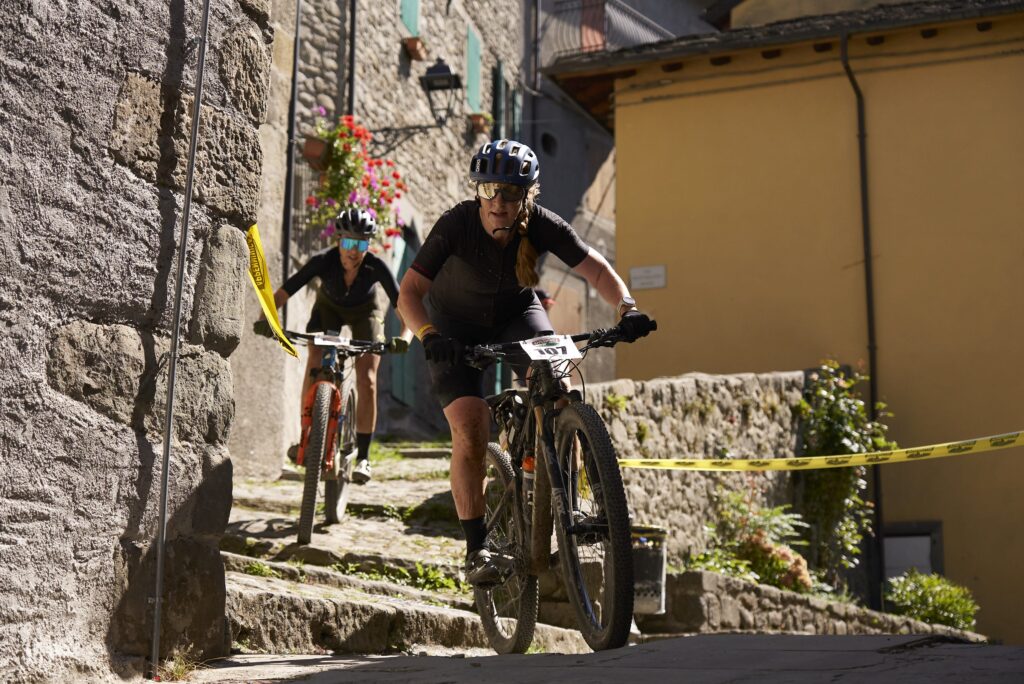
The routes provide full access to the amazing terrain of the Apennine mountains, and on any given day we would be ascending rough, rocky forest roads before diving into narrow singletrack on a fast descent. We would descend through ancient groves of chestnuts, and past derelict stone buildings where the land had rejected the dominance of man. The trails we rode had not been dug for mountain bikers, they were not a labyrinth through a contained mountain bike park, but instead the passage of people, cultures and progress over centuries. Riding from villages, to farmland, then forests and alpine terrain is a completely different experience to racing on a maze of purpose made trails.
Finding flow
Dr Richard Buning speaks about achieving a state of flow in this issue, and the elements that need to be present to achieve a flow state. This requires finding the meeting point of challenge and skill, and the need for external forces to remain at bay so you avoid any disruptions. It may seem contrary to what you would think, but I often find that marathon stage races in mountain ranges offer the ideal scenarios.
While Buning explains that an element of familiarity helps to achieve a flow state, I find that in a marathon stage race (where stages are well over 3 hours each day) good course marking and accurate stage profiles are a stop gap. It is always useful to study a profile so you can plan your stage, and some will show the trail type you are on. Once you’re accustomed to how the course team are marking trails, you can ride fast and confidently – despite riding blind. Throw in the fact you will be racing around the same riders for many days in a row and you have excellent markers around you for how far open you can ride. These events frequently lead to predominantly singletrack descents of 10-30 minutes long – and I think this is the perfect scenario for finding flow.
And the trails at in the Apennines require you to bring flow – the trails themselves are the antithesis of flow. Not one metre of what we rode had been carved by a machine as part of a regional trail project. I saw no sign of anything that resembled a berm. There was no reverse grade climbs, no table tops or builder lines. But what we rode was glorious.
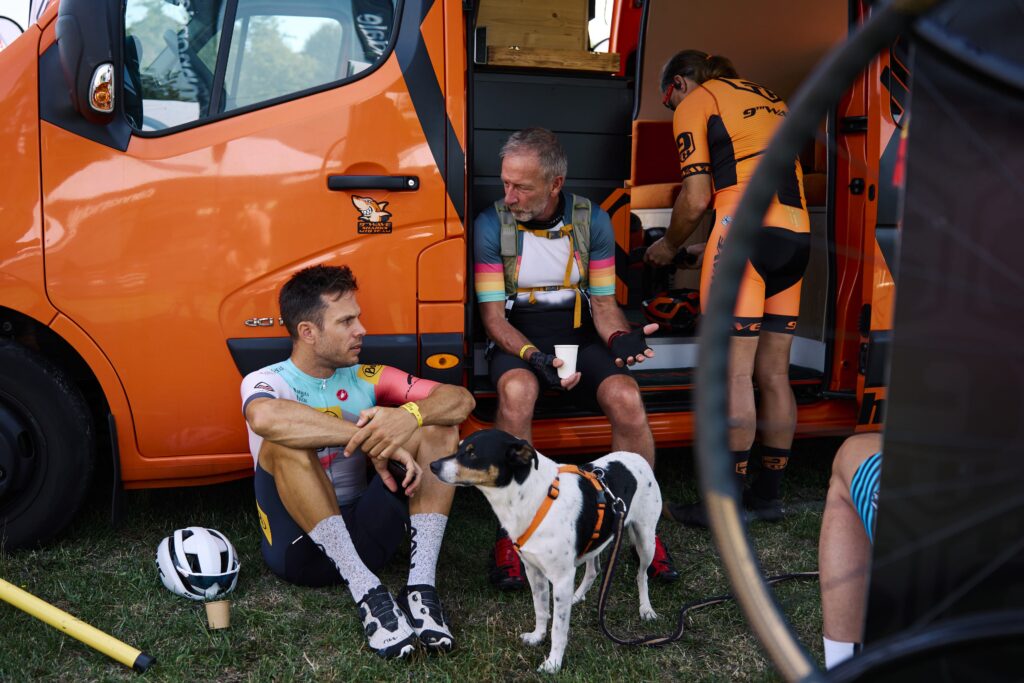
Some days we pinged over hidden rocks that had sunk into the trail from a collapsed stone wall, slippery with moss from the deep forest cover. We raced bar-to-bar through stone villages, up pathways built for nobility to ride their horses up to safety, or down shallow steps that locals had walked for centuries to get water from the streams.
In the alpine areas we rode trails that were etched into the ridgeliune, or singletrack cut into steep slopes, with the whole of the Emilia Romagna region on one side, with logs and rocks holding the trail to the side of the mountain with the assistance of steel rods. Little focuses your gaze more than a huge abyss to the side of your bars.
Best of all were the descents on some of the southern facing slopes – these were masterpieces of course planning using trails that connect pastures of arable land, forests where deep early autumnal leaf fall covered the trail, with sniper rocks and ruts ready to catch you out, and steep trails with rocky chutes between old stone walls asking you to rethink what you thought you and your bike was capable of. Even now I look back and smile about the riding, although it is hard to remember the specifics – just the joy of ripping trails blind.
All for the rider
I’m lucky enough to have ridden in a lot of bike events around the world. Each is unique. But none more so than the Appenninica MTB stage race. 20 years ago I recall approaching Stu Plant at an event to check on the time – before being told over the mic that it was ‘time to get a watch’. A good Dad Joke, sure – but not a way to leave a good impression on someone who has paid to do your event. The event crew at Appenninica were the complete opposite. Staff listened. The event directors Milena Bettocchi and Beppe Salerno were on hand every day, deeply involved in making sure the event ran to their high expectations.
I’ve often been at other events and realised there was a missing link – that moment where you realise there is a hole in the logistics, but you need to fill it. It may be riding to the start of an event with your gear bag (20kg+) slung over your shoulders for the first stage. Or an event that visits places with no useful accommodation in the region – or maybe the portaloo count was just too low, the soap ran out or worse – the toilet paper.
The Appenninica MTB ran like clockwork, with seamless race starts, fantastic course marking, excellent feed zones and a brilliant rider community that developed. By the end of the week, I recognised eery rider, knew many by name and had shared a drink with plenty of them – and likely all of them by the time the final banquet was finished. Not to leave anything half done, the final banquet saw all riders dine together, celebrate the winners, and share an amazing meal and wines.
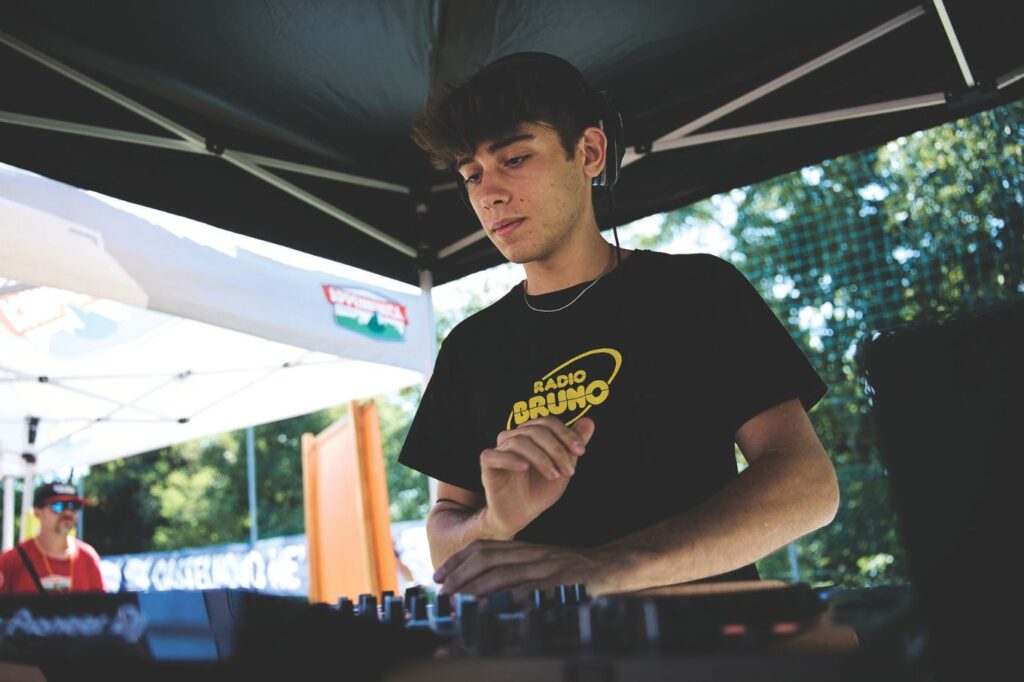
My take on the Appenninica MTB Stage Race
Don’t be fooled by this talk of rider care and unique trails. This is a very challenging event. We tackled steep climbs every day, with descents and trails that demanded your attention. I barely rode for weeks once getting home after the event, partly due to fatigue but also due to the banality of returning to my home trails and the reality of work. I firmly believe that challenge is nothing without reward, and the Appenninica MTB stage race delivers plenty of challenges. They may be your own personal challenges, or those delivered by racing the riders in your category. If you want to race some of the best – you can do that here.
The rewards in the Apennines are immense. Anyone who finishes this race should be proud – as great as the riding community it creates is, it is no walk in the park. For me, it is a cherished experience. With a rider cap at 150 each year and a calendar full of mountain bike events, it speaks volumes that many riders I met were racing their second, third, fourth and even fifth edition. Milena and Beppe have created something truly unique, and I feel privileged to have been a part of the Appenninica family in 2023.
So what are the trails like?
The route follows the Apennine range, along trails that have been trodden for centuries, and never built with a mountain bike in mind. But it turns out that paths built by the passage of pilgrim to walk up a mountain pass, or used by farmers mule to carry a load of chestnuts work just as well for mountain biking, delivering trails at sustained gradients that are carved into foothills and mountains alike.
From the rider’s point of view
Imogen Smith is an accomplished marathon and stage racer, and a three-time Australian representative at the Elite Marathon MTB World Championships. The Appenninica MTB was the third 6-day mountain bike stage race in a row through the northern summer for the seasoned racer – and it had a positive impact. Imogen finished 4th overall in elite women.
‘The level of this race really impressed me, and left a lasting impression. In terms of the terrain, the difficulty of the stages, the quality of the logistics and the complete rider experience; this event really gave me the sense of being part of a big celebration of mountain biking. It compares favourably with some of the most famous mountain bike events in the world. It has all the best bits of the biggest races in one of the most intimate and friendly environments I have ever raced in. The camaraderie and friendliness among riders from dozens of countries from the moment we met in the airport carpark was very special and a reflection on the hard work and vision that the organisers have. It’s also a great example that bigger is rarely better when it comes to stage racing. If you want to experience the wonderful and tough things of a stage race, the full breadth of the experience with the least stress possible – then taking on the Appenninica MTB is the way to do it.’

What Bike for Appenninica MTB?
I took my cross-country full-suspension bike, a Factor Lando XC built around a 120mm fork and 115mm of rear suspension. Using a 34t chain ring across a Shimano XTR 10-51t cassette I had just enough gear range – I could have easily put a 32t chain ring on and been pretty happy. I think a full-suspension bike is a must. While some of the trails may look smooth and there are road sections, at times you are on unrelenting rough trail, and most days are between 3-6 hours long. Comfort and traction from an efficient full-suspension bike are a must.
I used a 80mm drop dropper post and would have gladly had more. Some of the top professionals rode without a dropper – but their job is to ride fast. I used wide-rimmed carbon wheels with a Maxxis Rekon Race 2.4” on the front and an Aspen 2.4” on the rear. I had a Tubolight SL in the back wheel which no doubt saved me a few times on the dark and rocky trails which had a deep coating of early autumn leaflitter on them. Neither tyre was new, and they had just enough traction, although I lacked some braking traction on the really steep terrain. I did use most of a new set of metal pads in the week – your brakes will get a workout.
If you really want to rip the descents, err towards a capable 120mm bike. You could even take something like a very light trail bike. A Trek Top Fuel, Transition Spur, Revel Ranger – all these bikes were in the race and the riders were having a great time ripping on the forest trails and steep, janky descents.
Rider services at Appenninica MTB
Any mountain bike stage race is a bit like a package holiday – you can add a few extras that suit your needs. The most useful for logistics are the transfers – and you can book them when entering. These make sure you’re at the right place for the start of the event, and at the right place to travel home. With the race start in Bologna in 2024, logistics are already simplified.
You can opt for a hotel package, where you stay and eat breakfast in a hotel in or close to the host town. There are shuttles to take you and your luggage to and from the hotel and back again as needed – although often you may be walking distance to the race venue and meals. There is also the dorm option where you camp in sports buildings, with showers and toilets onsite. There is also campervan parking, which is a very popular option for those who drive to the event from mainland Europe.
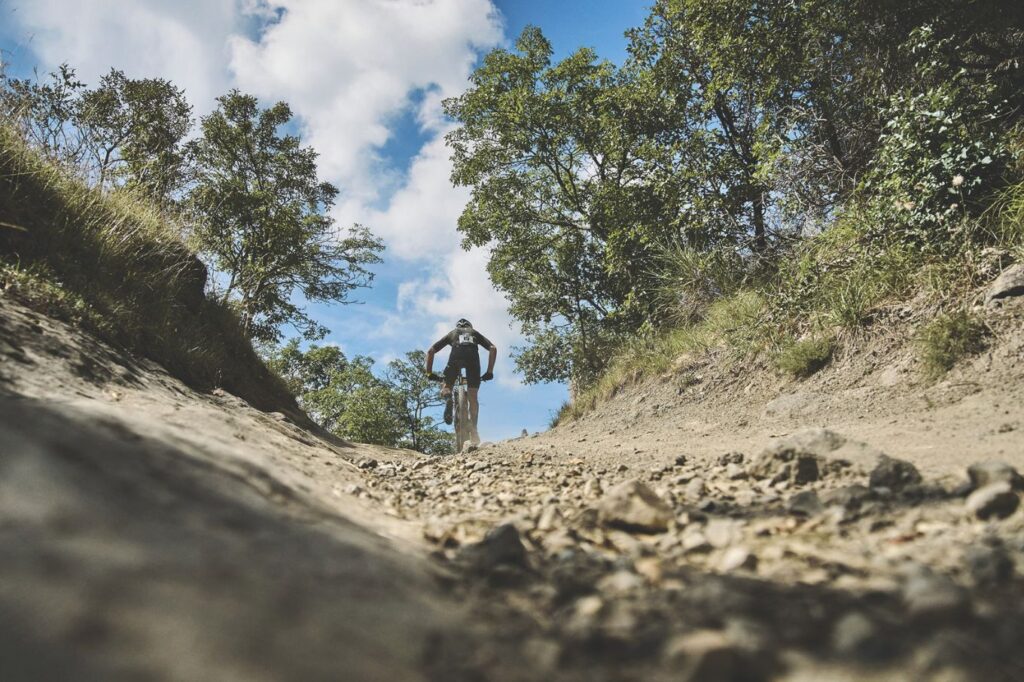
Meals are provided at your accommodation or by the host town at the event centre. Expect good quality Italian food in plentiful supply. Dinner precedes the presentations for the day and briefing for the following day. It is important to attend, but the briefing also gets shared to all riders if you choose to have a meal at your hotel – which we did a few times as well. I can recommend not consuming most of a bottle of Lambrusco yourself in the middle of the week, despite it being a regional speciality.
There is plentiful in-race nutrition at the feed zones, with sports food and drink, along with favourites like coke, juice, fruit and nuts. And water, of course. You can also elect to have two water bottles dropped at select feed zones.
As you cross the line each day, you’ll be handed some mineral water (gas or no gas, that is up to you) and there is catering and a place to sit, recover and chat with your competitors. There will be pasta, or risotto, cured ham, cheese, bread, fruit, pastries, juice, water… a lot of food. As you can leave a day bag at the start, it is easy to collect it at the finish and dig out your own post-race nutrition if you prefer that.
There are also massage services that you can book, and mechanics that are on hand before the race and after the race each day to make sure your bike is running well. A bike wash area is setup each day with power washers, soap and brushes to keep your bike clean. All in all, there is just about everything you need. Just turn up ready to pedal and have a great time.
Appenninica MTB in 2024
In 2024 the race will run from September 2-7, starting in Bologna. Expect to cover 400km with about 13000m of climbing. The courses are revealed closer to the dates of the event, but all details are on the event website.
appenninica-mtb.com

